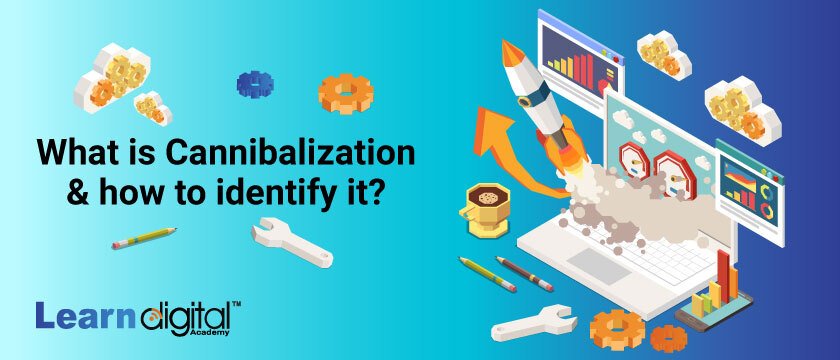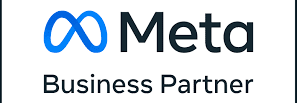
Is your website’s organic traffic slowing down?
Is your keyword ranking plummeting?
You might be a victim of cannibalization and it needs to be fixed immediately. Cannibalization can cause websites to compete against themselves.
What is Cannibalization?
Cannibalization is an error that occurs when duplicate resources or content target the same purpose. It also happens when multiple pages on your website are trying to rank for the same keyword. Cannibalisation pulls the visitors in different directions and doesn’t guide them towards a goal. As a result, visitors leave the site and your organic traffic decreases.
Cannibalization can occur with keywords, SEO, social media, and sales. An example of market cannibalization is when a business launches a new product and experiences a dip in the sales of their old product. The worst case scenario is when the old products get phased out. Most of the time, it’s intentional and can be fixed easily.
In digital marketing, cannibalisation is when the keyword rankings go down despite doing the best you can. It also happens when your social media is pulling traffic away from you website when it should be doing the opposite. When social media became a popular tool for marketing, marketers linked to their social media profile on their websites. This mostly proved no use in a business strategy. It’s more likely that the traffic was directed backwards. This Digital marketing agency in Bangalore can ensure that this doesn’t happen.
Also read: What are SEO Keywords?
If you’re facing this problem as well, panic not! We will show you how to identify and how to fix cannibalization.
Causes for Cannibalisation
- Several web pages are targeting the same keywords or phrases. Instead, creating a long-form content that targets similar keywords will help keep cannibalization at bay.
- Improper internal linking. Using the same keywords to link to different pages is one of the ways to botch up the website.
- Repetitive topics. If the blogs or articles on your website are similar and the topics repeat multiple times, then it’s bound to compete against each other and cannibalize.
- Changing search intent – with the search engine algorithm changing constantly, it’s important to keep a look out for the search intent of the focused keywords and optimise it according to search engine ranking factors and needs.
- Your website is focused on too many topics fighting for attention. Banner ads and CTA buttons all over the page can cause users to displace attention in the wrong place, confuse them and make them leave the site.
- Indexing unnecessary pages on your website. Hiring a digital marketing company can help you solve the problem of cannibalisation and ensure that your keywords and traffic are in place.
How to Identify Cannibalization?
A great website has pages that concentrate only on specific topics. The sitemap is designed with visitors and keyphrases in mind. If you don’t select specific phrases, or if you target more than one phrase per page, you’re diminishing your relevance. It’s better to rank on page one for one particular phrase than to rank on page two for several phrases. Your site may be eating away at its own search traffic without your knowledge.
There are different types of cannibalization and you can identify each of them using the tools mentioned further in this blog.
Identifying keyword Cannibalisation
The first step is to find if more than one internal pages are competing for the same keywords. Enter a keyword from your website in the search widget and see if multiple URLs show up will appear for that particular keyword.
Another way is by using the SITE command. Enter “site: yourwebsite.com + keyword” on Google and hit enter. You will see all the content with that keyword. You will get a result of all the URLs of your domain that are indexed and have the quoted keyword in common and fighting each other for a place in the same search.
Also read: Search Marketing Strategies
You can also find what needs fixing using the tools below:
Ahrefs
Ahrefs is a popular SEO tool that lets you determine if multiple pages are ranking for the same keywords. You can export the data on an Xlsheet and analyse it. Find out which pages are subject to keyword cannibalisation and penalisation.
SEMrush
SEMrush is another popular tool that lets you get a full view of your site’s cannibalization result. Just login to your account, enter your website in position checker, and add the keywords you suspect of cannibalization and under position tracking dashboard, click on cannibalization. You will then find all the keywords and keyphrases that are causing internal cannibalization.
Data studio
Cannibalization explorer in the data studio is one of the best and free tool to detect internal keyword cannibalization.
Social Media Cannibalization
Instead of driving traffic to your website, your social media profile may be pulling traffic away from it. When a visitor clicks on a social media icon, it eats away your traffic statistics. When they leave your site, they are going farther away from your products page, or your contact form or shopping cart. That is every marketer’s worst nightmare and worst mistake. You wouldn’t want that, would you?
Must read: How to Improve Your Website Rank in Google
Add the social media icons in your website only if it’s helpful for your business and contains relevant content that users can’t find on your website. A follow our page or like our page button can sometimes drive away the visitors from your website.
How to fix Cannibalization
If cannibalization on your website is left unchecked, an undesirable web page can rank higher than a desirable web page and risk your site getting penalised by Google.
A few tips to avoid cannibalization in your website –
- Guide your visitors from social media to your website, not the other way around. Use vimeo or other video streaming tools to embed the video. Once visitors click on a youtube video, it’s unlikely that they’ll come back to your site after watching the video.
- De-optimise the content. Though you don’t always need to do this, if the content is ranking a keyword that the other contents also are and cannibalizing it, you can de-optimise the content instead of deleting it. You can also change the internal links and request anchored inbound links to be changed.
- Use different variations of keywords keeping the search intent in mind. The search intent has to be relevant with the current trends.
- Canonicalise – A canonical tag (rel=“canonical”) is a snippet of HTML code that defines the main version for a duplicate, near-duplicate and similar pages. In other words, if you have the same or similar content available under different URLs, you can use canonical tags to specify which version is the main one and thus, should be indexed.
- Noindex – This works best for pages that are useful to your visitors. But you want to make sure that they don’t rank in the search engines and potentially cannibalize another page.
Blog category pages usually fall into this noindex category.
- Delete – Delete pages that have low value to you or to your visitors and are cannibalizing other pages. But before deleting the page, check it for inbound links.
Every marketer must know what cannibalization is. It’s a hot topic in digital marketing, especially in the SEO world. Always keep an eye on the site for such issues as it can potentially damage your website’s performance and rankings in th SERPs.
Learn how to rank your website practically, we at Learn Digital Academy provides online and offline practical search engine optimisation course for everyone.


